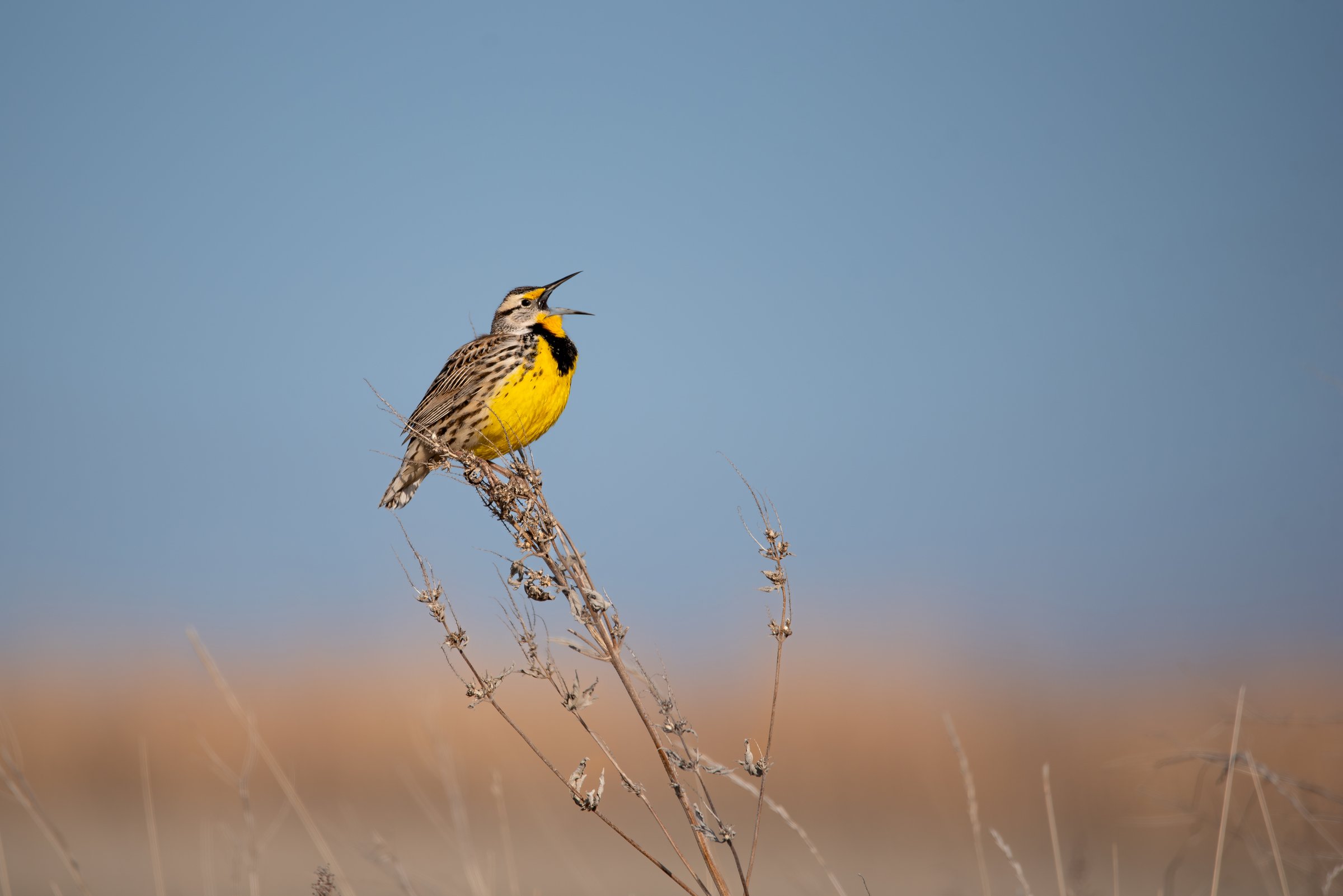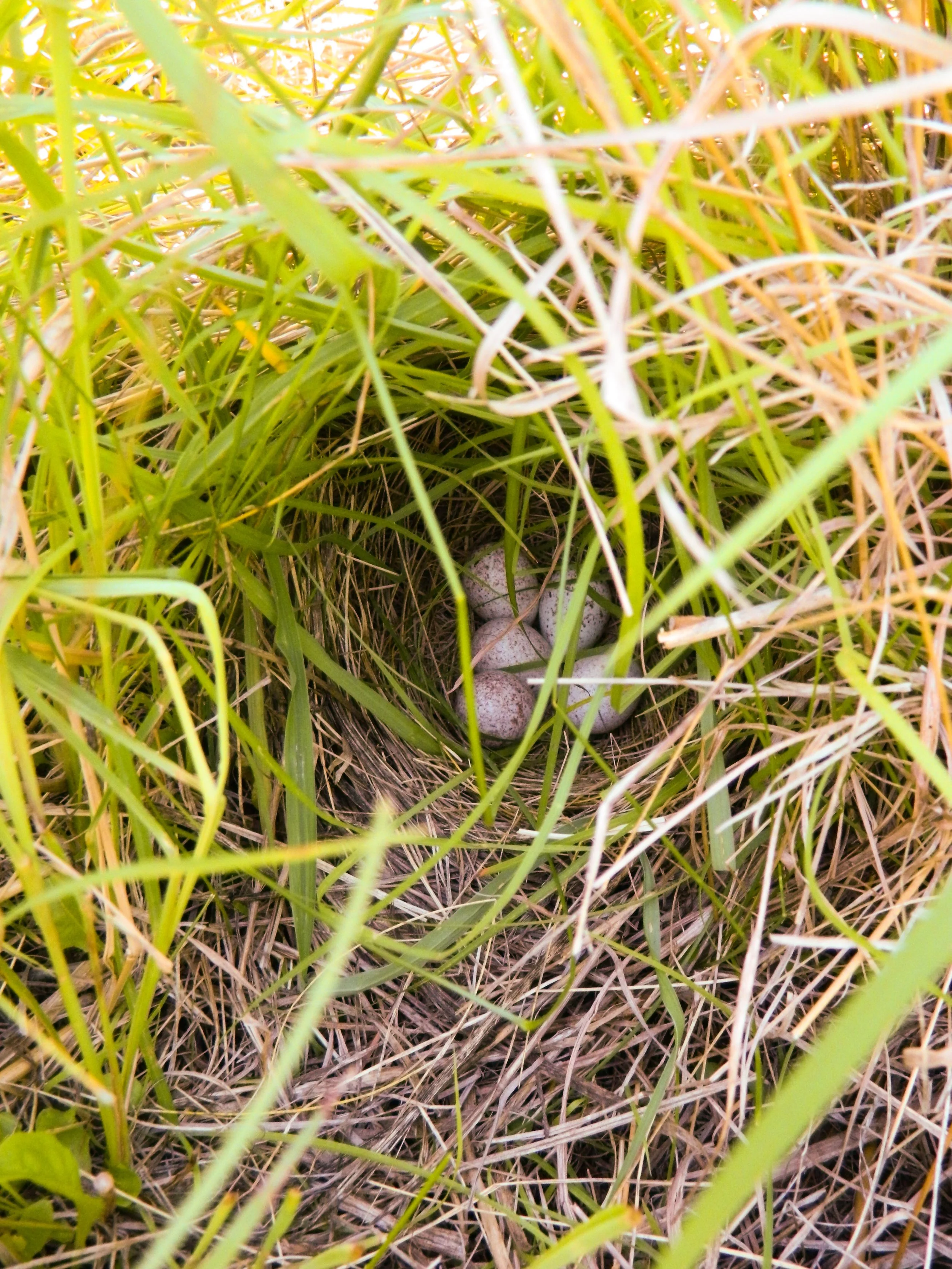Eastern Meadowlark (Sturnella magna)
Photo by Brady Karg
Photo by Madison Audubon
The Eastern Meadowlark, with its bright yellow breast marked by a distinctive black chevron, is a grassland bird. Meadowlarks live and breed in native grasslands, pastures, and savannas, as well as hay and alfalfa fields, weedy borders of croplands, roadsides, orchards, golf courses, reclaimed strip mines, airports, shrubby overgrown fields, or other open areas.
Although they occupy a very large range, Eastern Meadowlarks are in decline due to destruction of their grassland habitat by urbanization and intensive agricultural practices. Other human activities, such as mowing during the breeding season, may destroy their nests and young. There may be unusually heavy mortality during severe winters.
Their conservation status has been assessed by BirdLife International as Near Threatened. See best management practices from Virginia Working Landscapes for further information on protecting grassland and shrubland birds, including Eastern Meadowlark.
An Eastern Meadowlark occupies a territory of seven to eight acres and requires a grassland patch of 40 acres or more, so most suburban homeowners are unlikely to observe them in their yards. However, those whose properties are larger and open or connect to larger grassy acreages can take steps to preserve and create habitat for Eastern Meadowlarks.
I-95 landfill at Lorton: NVBA’s recommendations influenced Fairfax County’s adoption of no-mow zones at the landfill during nesting season, and the I-95 landfill has now become habitat where Eastern meadowlarks and other grassland birds nest and thrive. Read about the effort here and here. (Note: the landfill is not open to the public.)
| What Eastern Meadowlarks Need | How Can We Help |
|---|---|
| Food and Water:Eastern Meadowlarks feed on the ground, mostly insects, such as crickets and grasshoppers or (in spring) caterpillars and grubs. They eat grass and weed seeds in winter. |
|
| Shelter: Eastern Meadowlarks rely upon their camouflage and ability to hide in grass for protection from predators. |
|
| Nesting: Females build their nests on the ground, often in dense, tall vegetation in a shallow depression. The nest is well-concealed, built out of dried grasses and plant stems. Females incubate eggs for about two weeks, and nestlings fledge about a week and a half after they hatch. Fledglings depend on their parents to feed them for another two weeks. It takes the female about 100 trips per day to feed the young the insects they require. |
|
| Other Threats:
|
|
Where to See Model Habitat and Observation Sites:
Morven Park in Leesburg; Meadowood Recreation Area in Lorton
Check out Meadowlark observations near you:
Find sightings using eBird Data. Narrow the view by entering your county or town in the “DATA FOR:” filter.



